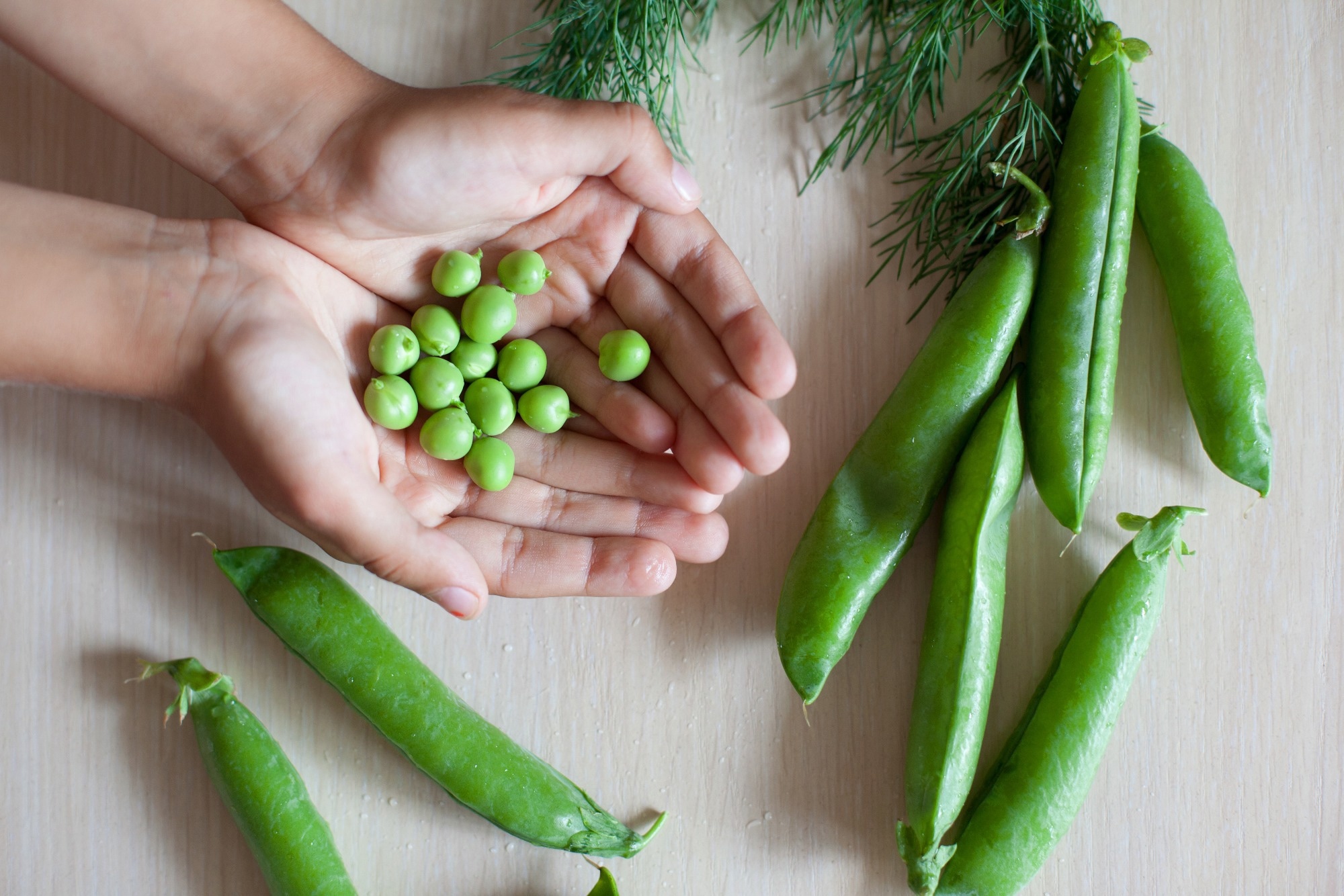A recent study published in the journal Nutrients discusses improvements in diet quality associated with legume consumption in young children.
Study: Bean consumption during childhood is associated with improved nutritional outcomes in the first two years of life. Image Credit: Olesya Turchuk / Shutterstock.com
Benefits of legumes
Early childhood nutrition impacts an individual’s development and both acute and long-term disease risk. Legumes are widely known to be excellent sources of protein, carbohydrates, micronutrients, and phytochemicals.
Legumes, such as peas, beans, and lentils, are rich in fiber, high-quality protein, complex carbohydrates, iron, folate, zinc, potassium, magnesium, and choline.
Few studies have assessed the benefits of legumes in early childhood diets. The type of legume commonly consumed may affect the nutritional profile and specific recipe. For example, when meat or carbohydrates are combined with legumes, the effect of consumption may change.
About the study
Researchers explored legume intake and total dietary intake from birth to 24 months of age using data from the Women, Infants, and Children Infant and Toddler Feeding Practices Study-2 (WIC ITFPS-2) study. The WIC ITFPS-2 study enrolled the participants from the Special Supplemental Nutrition Program for Women, Infants, and Children (WIC).
Data from approximately 3,000 mother-child pairs at two-monthly gaps from one month of life until 15 months and two visits at 18 and 24 months were obtained for the analysis.
The study aimed to obtain a quantitative measure of dried beans, lima beans, chili, and yellow beans to determine the consumption of macronutrients in grams and percent of total dietary energy intake. Micronutrient intake was measured at 11 and 24 months.
Study findings
About 56% of the children were White, whereas nearly 60% were of neither Hispanic nor Latino ethnicity. Over 90% of children were born with normal weight, and nearly 70% were born to unmarried mothers.
About 56% of mothers had excessive body weight and did not complete schooling beyond the 12th grade. About 75% of women were born in the United States, whereas 55% lived with the baby’s father. About 50% of the babies were breastfed until three months, whereas only 12% were breastfed until six months.
The Supplemental Nutrition Assistance Program (SNAP) or similar programs were used by 85% of the women.
At all time points, the consumption of yellow and lima beans was very low, with the highest rate of consumption reaching 0.1% at 18 months of age. Likewise, the percentage of infants who consumed dried beans was very low, with 1.2% and 10.5% consuming dried beans by seven and 18 months of age, respectively. The consumption of chili beans was also low at 0.4% by seven months of age and peaking at 5.9% of age at 24 months.
Current recommendations advise that toddlers and children consume 1.5 cups of cooked legumes each week; therefore, most children in this study did not meet current dietary recommendations. Importantly, children must start tasting and eating healthy foods during infancy to increase the likelihood that they will choose to eat these foods in later life.
Some reasons why the children in this study failed to meet these recommendations may include lack of time, cultural factors, inconvenience, and knowledge of what tastes the family prefers. Thus, demographic factors play a role in choosing whether to serve legumes to the young child.
White children were more likely to consume beans at one and two years as compared to Black children, at about 6% and 1%, as well as 12% and 5%, respectively. Children of Hispanic or Latino ethnicity had a higher mean consumption of dried and chili beans than non-Hispanic, non-Latino children, at 8.5% and 2%, respectively.
Babies born to married mothers, women living with the baby’s father, and infants born outside the U.S. consumed more beans. Lower maternal education up to the ninth grade was also associated with higher bean intake.
Chili bean consumption was higher among Hispanic/Latino children, those born to women educated beyond the 12th grade, and those born outside the U.S. at both one and two years.
At one year of age, the total energy, protein, and fiber intake of children who ate dried beans exceeded that of children who did not consume these food products. The proportion of energy from carbohydrates was higher with dried bean consumption, as was total fat intake. Higher potassium, folate, and magnesium intake were also associated with dried bean consumption.
At 24 months, these findings were replicated, except for reduced total energy intake with dried bean consumption.
Chili bean consumption at one year was associated with higher total energy intake and percentage carbohydrate intake; however, the proportion of energy obtained from carbohydrates did not increase. Increased intake of fiber, fat, and micronutrients, except iron and vitamin D, were also observed.
At two years, the proportion of energy from carbohydrates increased, along with higher fiber content. Increased potassium and magnesium levels were also associated with chili bean consumption.
However, total protein, carbohydrates, and fat intake in this group did not increase compared with non-consumers. Fat as a proportion of energy was reduced at this time point.
Conclusions
Although bean consumption was low among very young children and limited to chili and dried beans, it was associated with a better nutritional profile for both macro- and micronutrients at 11 and 24 months of age.
Earlier adult research has demonstrated the benefits of dietary legumes on metabolic health and weight management. In fact, a nutritional education program directed toward mothers in an Ethiopian study was associated with a higher frequency of legume intake in children following the intervention. The children’s height- and weight-related indices also improved in the intervention group.
Future studies are needed to elucidate the long-term effects of legume consumption on health and food choices in very young children.
Journal reference:
- Choudhary, D., Rideout, T., Millen, A. E., & Wen, X. (2024). Bean consumption during childhood is associated with improved nutritional outcomes in the first two years of life. Nutrients 16(8); 1120. doi:10.3390/nu16081120.
Credit: Source link




